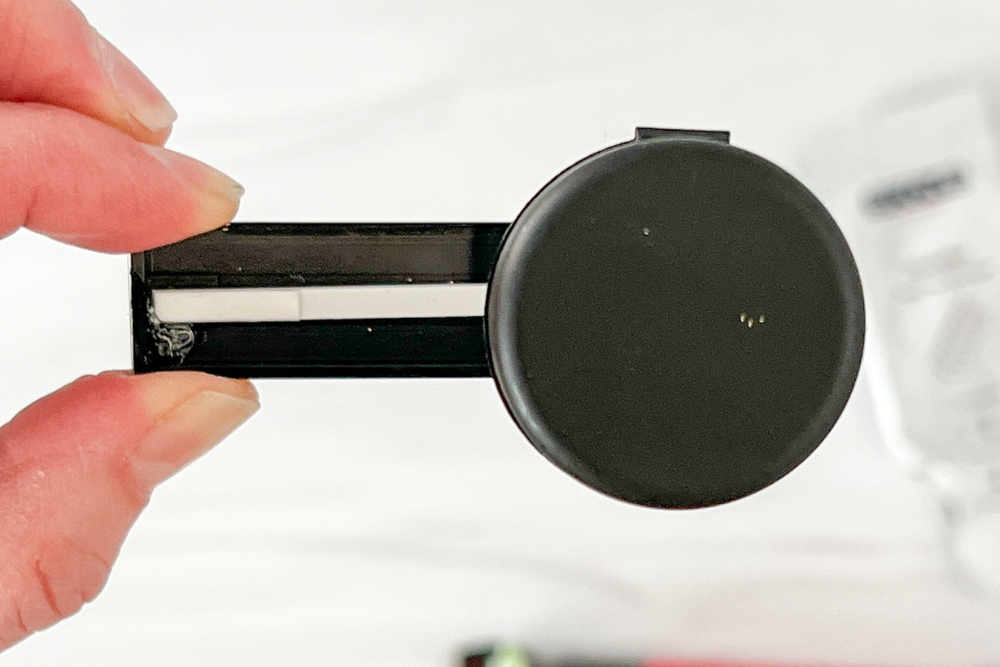
This article contains my honest review of Ecove’s Glutrust gluten-detecting testers. I compare the testers to Nima Sensor, the leading gluten-detecting device and system. This post may contain affiliate links. Please see my disclosures.
The Glutrust portable gluten test kit is the latest device to enter the gluten-detecting space, joining Nima Sensor and The Allergy Amulet in the fight for the gluten-free community’s trust and money.
Glutrust is a lateral flow gluten-detecting tester claiming to detect gluten in food, drinks, and personal care products.
Glutrust says its test kits don’t require customers to purchase “expensive machines,” a direct shot at the nearly $200 Nima device. It promises to reveal if a food or personal care item is gluten-free in about one minute.
Glutrust contacted me and offered to send a test kit with “beta testers.” I accepted the offer and was excited to try this new gluten-detecting system.
Even though I was getting “beta testers,” the spokesperson I exchanged emails with said this batch of testers was guaranteed to provide results comparable to those of ELISA testing methods.
He said I would need to interpret the test results visually since the company’s AI tool isn’t ready yet. He said:
- A single line means the tester found <1 part per million (ppm) of gluten.
- Two lines on the test strip indicate the presence of gluten in the sample.
- In the future, he said users will be able to upload a photo of the test strip to the company’s AI tool (via an app), where AI will distinguish if the tested item contains 1 – 10 ppm, 10 – 20 ppm, or >20 ppm of gluten.
He also sent me the following image to help me interpret the results visually without the AI tool. He recognized that visually reading the test strip is “prone to human error.” He said the darker the second and third lines, the higher the gluten concentration.

I experimented with Glutrust and have to say it’s a no-go for me, at least now. But I want to explain how it works for those interested in trying it.
Please note that I’m committed to updating this article as the technology changes and [hopefully] improves. Remember, I received beta testers and not the final product, although the company is currently selling “beta testers” despite significant flaws in the design and function.
My First Glutrust Test
The Glutrust test kit arrived in a black box and contained 15 single-use test kits.
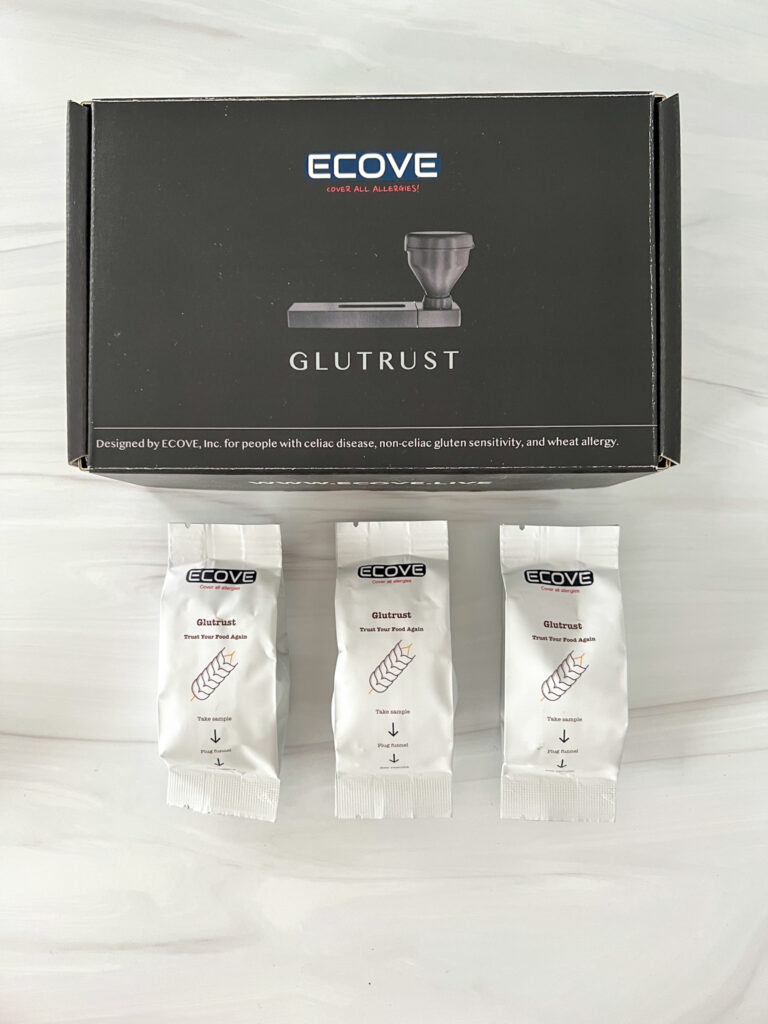
Inside each test kit, I found a large funnel containing the chemicals and an exposed test strip with a flimsy glass covering.
Unfortunately, several of the funnels were leaking, which ruined the test strips upon contact. Plus, I got the chemicals all over my hands. Hopefully, the chemicals aren’t toxic.
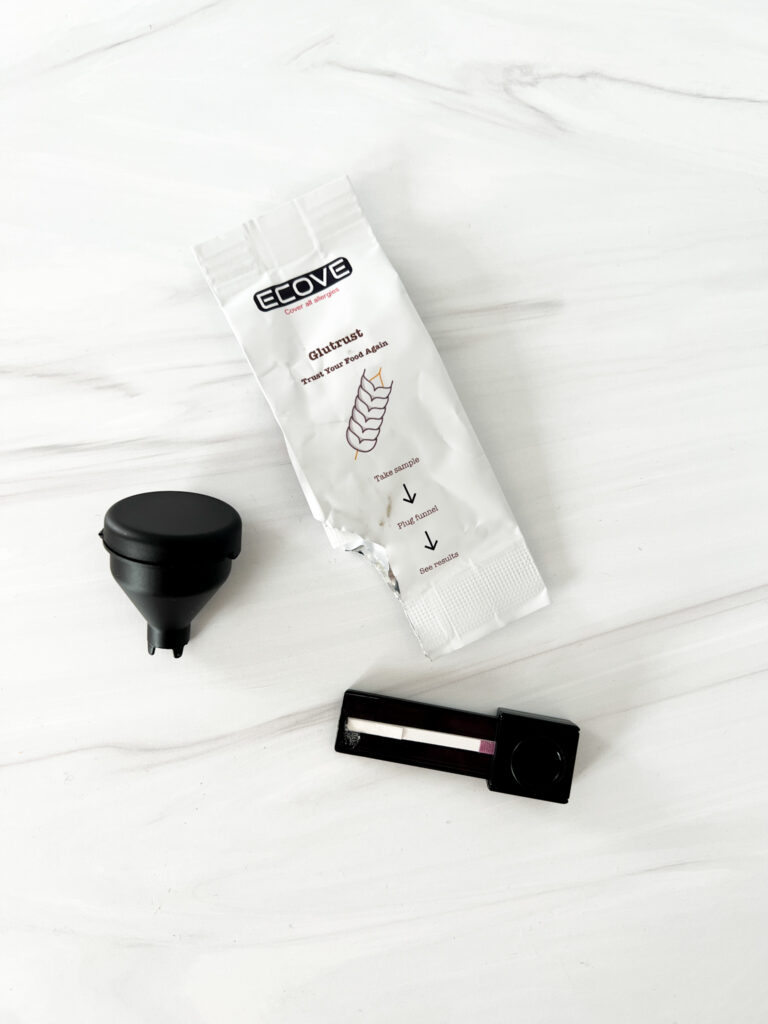
A spokesperson for Glutrust told me he’s aware that some of the funnels are leaking, and they will address this issue in the next version.
To insert a sample piece of food inside the funnel, peel the foil on top to expose the chemical solution. Place an 8-10 gram piece of food (equal to about 1 1/2 tsp) inside the funnel.
Glutust advised me to take a toothpick or straw to mix and break down the food I placed inside the funnel.
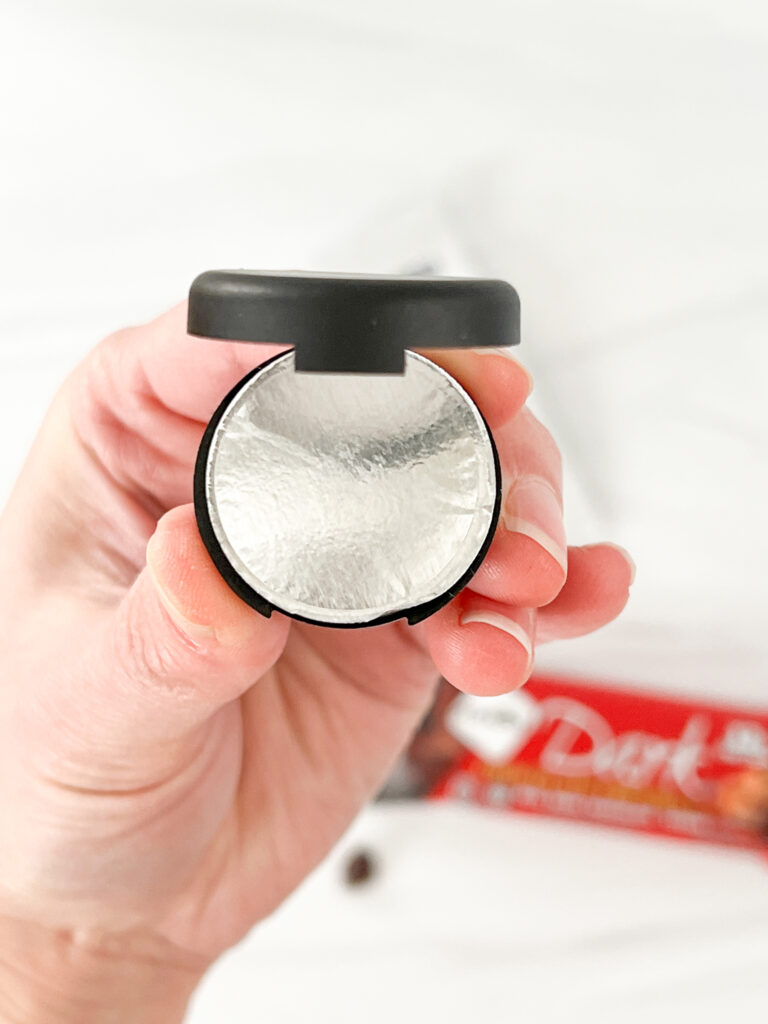
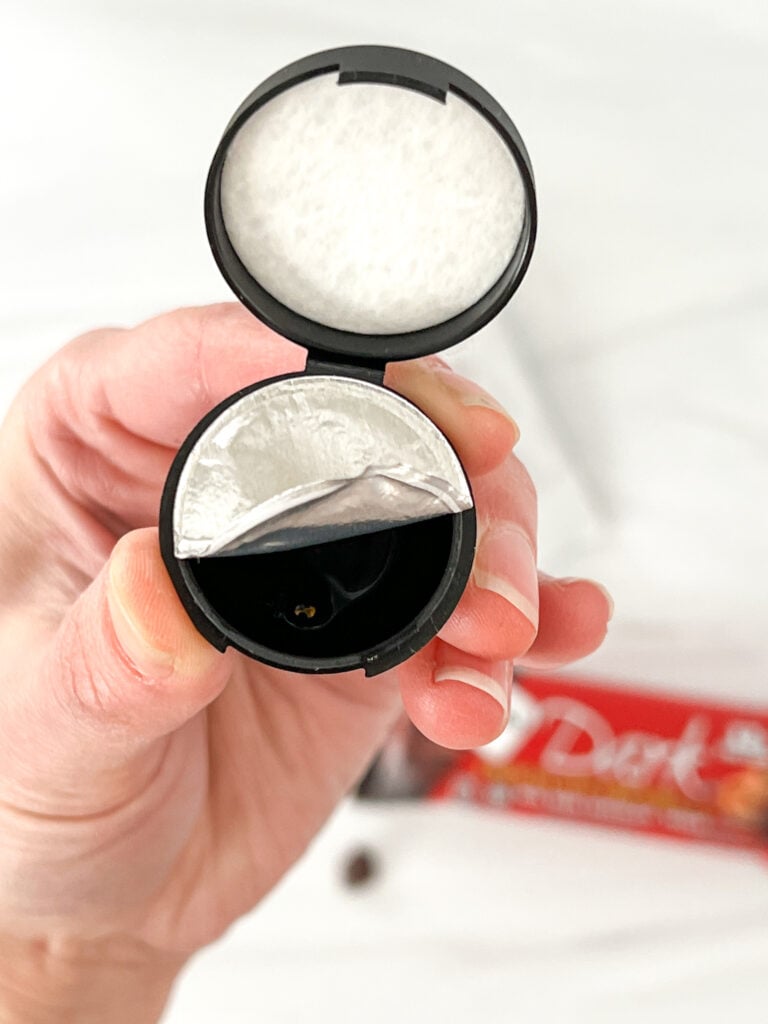
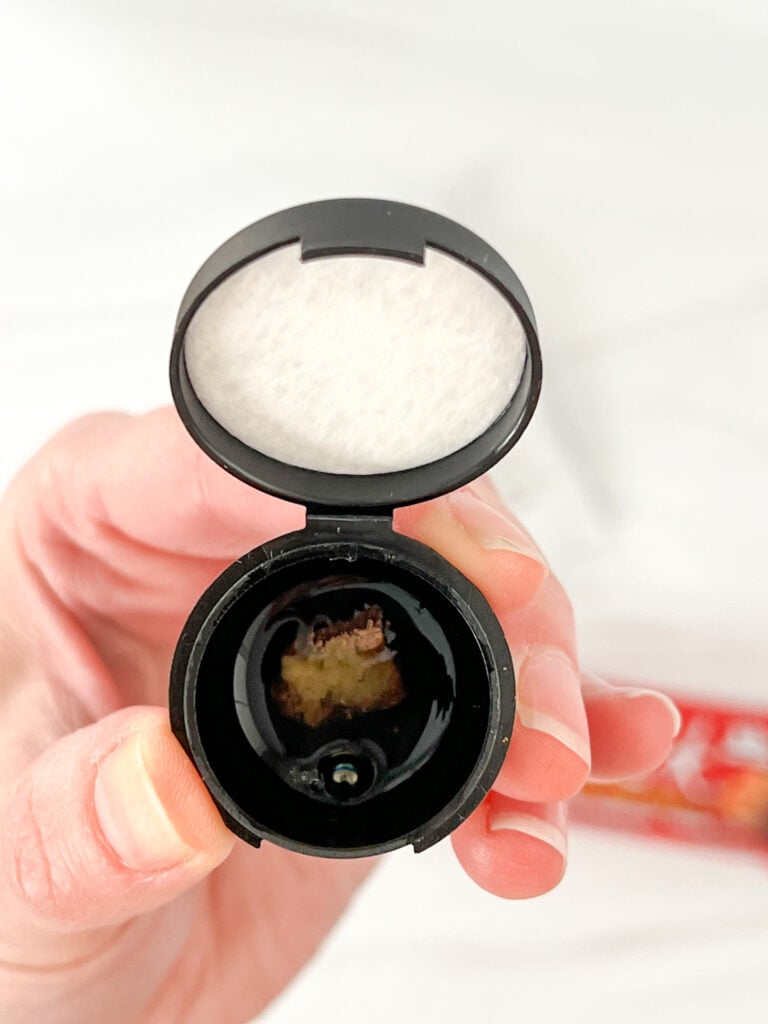
After closing the funnel, Glutrust says to allow the sample 30 seconds to rest, then to gently shake the funnel in a circular motion to ensure all the liquid comes in contact with the food sample.
Once the sample has been sufficiently mixed in the chemicals, Glutrust says to plug the funnel into the test cassette (test strip).
I decided to test a NuGo bar with the Glutrust device. While the NuGo bars are certified gluten-free, I was surprised that this one contained pretzels. I definitely want to test it for hidden gluten first.
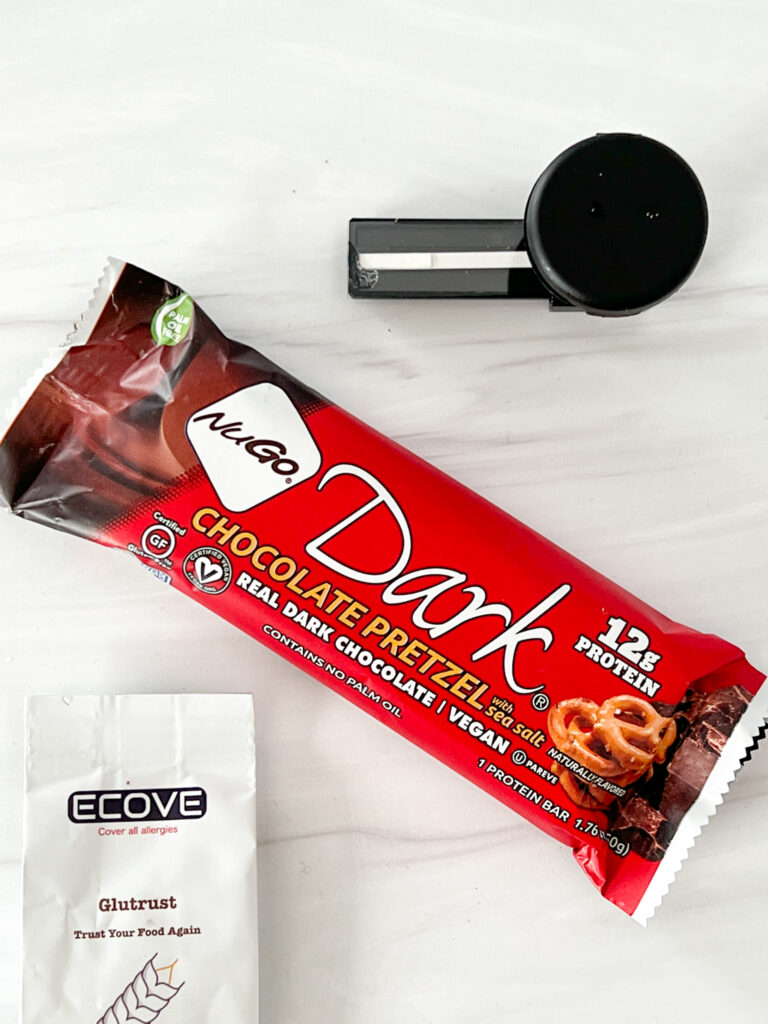
The first two Glutrust testers did not work, so I contacted Glutrust for help. The spokesperson suggested that I prop the tester on the silica packet inside each tester to help the tester work.
In the future, Glutrust says it will provide a reusable metal cassette holder that will provide the correct inclination to ensure an efficient lateral flow. (Would that mean users must carry the metal holder?)
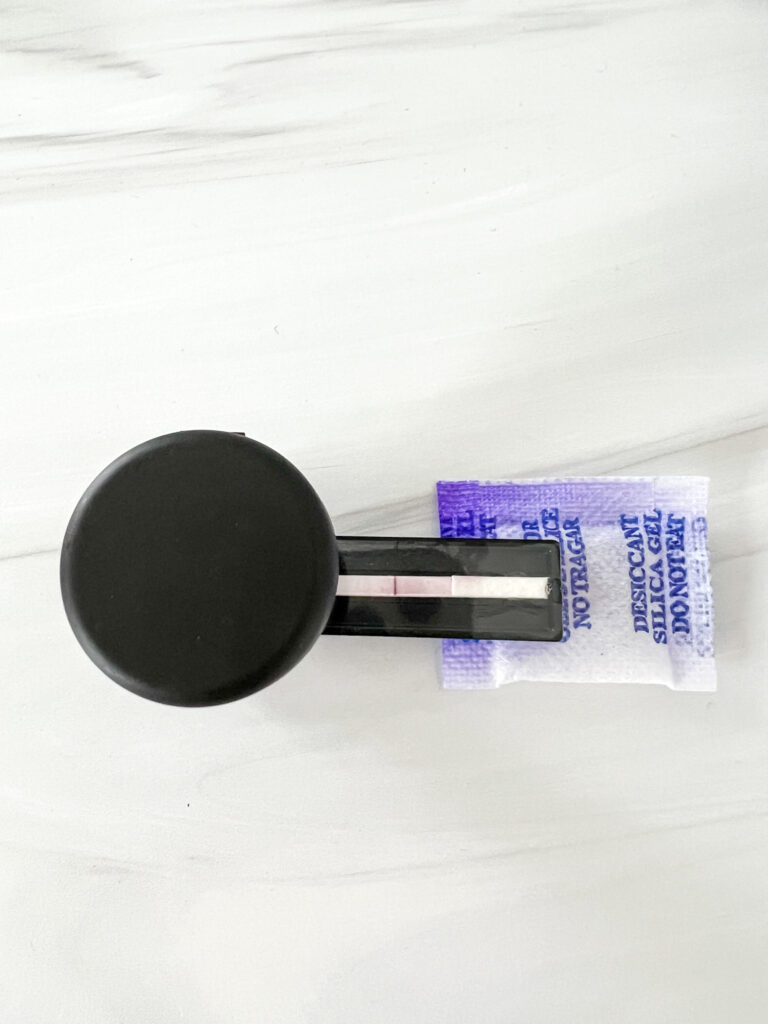
In the above picture, Glutrust displays a single pink line. This means the NuGo bar is gluten-free, as one line means it found <1 ppm of gluten.
In the future, Glutrust says users will take a picture of the test strip and upload it to the AI app, and the AI tool will reveal how much gluten (ppm) was found in the sample.
Glutrust says to read the results within 1-2 minutes, but not after that, as the results may no longer be accurate.
I decided to use my Nima Sensor to test the same NuGo bar, and Nima didn’t find any gluten either, as evidenced by the smiley face displayed on the device.
Please note two lines on the back of the Nima capsule means it found no gluten. The first line is the control line; the second line implies no gluten found, and the third line, if displayed, would have indicated the presence of gluten.
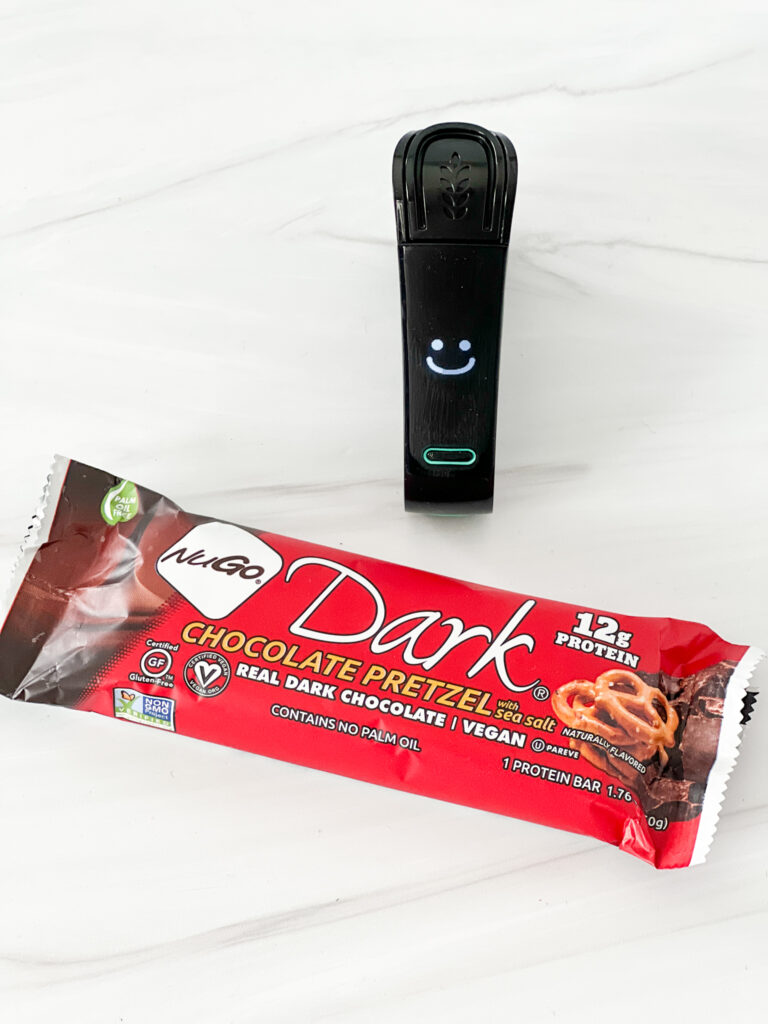
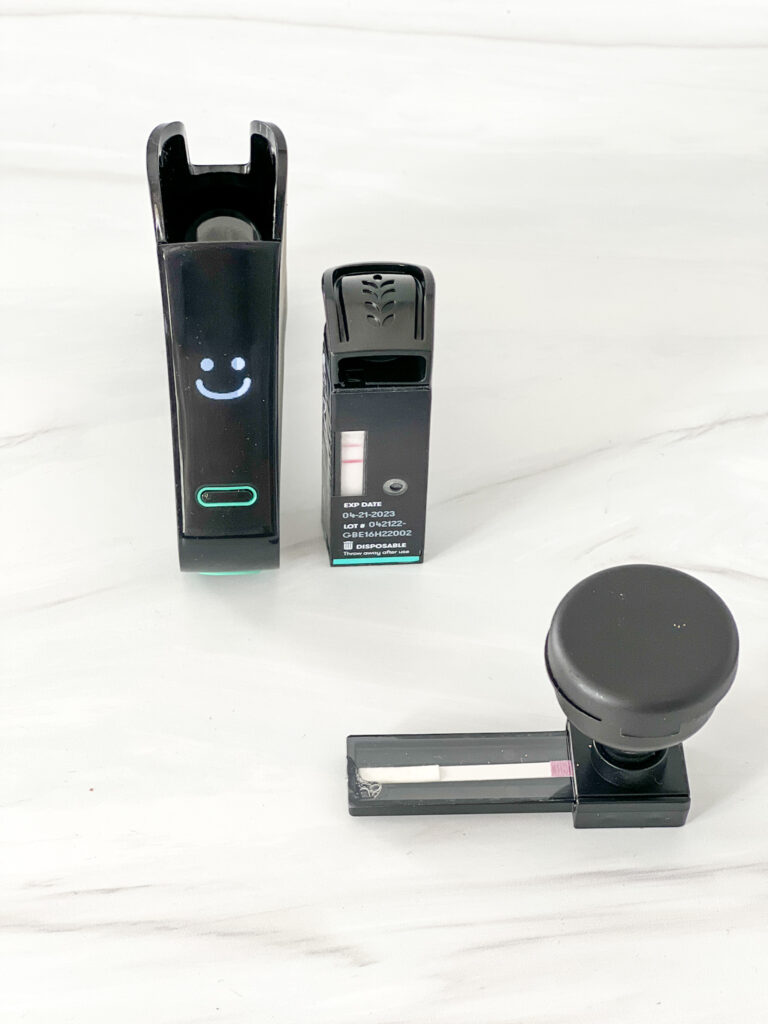
Overall Impression of Glutrust
I have a few things to say about the beta Glutrust testers:
(1) It’s Not Intuitive: There was a lot to do to make sure I got an accurate test, from mixing the chemicals with the food sample, waiting one minute before inserting the funnel into the test strip, making sure the test strip was at an incline, and reading the results that weren’t always clearly displayed given that many of the testers leaked and compromised the test strips.
Nima is often criticized by so-called “experts” who say the general public isn’t smart enough to use testing devices properly, which can lead to inaccurate results. While I think Nima is easy to use, Glutrust is not and would open a floodgate of criticism if used in its current state. Significant improvements are required before anyone can trust Glutrust’s results.
(2) The Test Kits Feel Cheap: The product felt very cheap. Some of the cassettes that hold the test strips were cracked or missing.
(3) It’s Not User-Friendly: I think Nima is easy to use and involves a much more automated process. Here are a few ways Nima is more user-friendly than Glutrust:
- Breaking down the food: Nima test capsules contain a claw that grinds and breaks down the food sample. With Glutrust, users must use a toothpick or straw to grind the food manually.
- Immediate results displayed: Nima displays a smiley face on the testing device if the sample is gluten-free and “Gluten Found” when it finds gluten. Users don’t need to upload a picture to any app or take further steps to see the results. With Glutrust, however, users must take a picture of the test strip, upload it to the app, and wait for the results. Why would a photo of my test strip be more accurate than my own eyes? And I think there will be future issues with user photos that may be blurry or taken in limited light.
- Glutrust is not quicker: Glutrust says it offers results in one minute, whereas Nima says 1-3 minutes. However, Glutrust forgets that after one minute, users need to upload a photo to the AI tool and await the results. This, as I see it, is a huge time suck.
(4) Unnecessary Exposure to the Chemicals: Every time someone uses Glutrust, they expose themself to the chemicals inside the funnel. These chemicals can easily be spilled on food or hands, which is a huge deterrent. Nima hides the chemicals and doesn’t expose users to them. It feels like a safer option.
(5) Glutrust is Just as Expensive as Nima: While users won’t have to purchase a $200 Nima Sensor (triangle-shaped device), both testing options require the purchase of single-use testing capsules.
Nima capsules cost about $6.60 per capsule, and each Glutrust capsule is $6.40 (when purchased with a monthly subscription). Both companies offer subscription services, which are nice to have but should not be mandatory. Subscription services are bad business and should always be optional.
(6) How Much Gluten? Glutrust has one reason that might compel the gluten-free community to use it over Nima, and it’s that Glutrust says it will share how much gluten (ppm) is in the test sample.
Right now, Nima can only reveal if a product contains gluten, but users have no way of knowing if it found 11 ppm of gluten or 120 ppm of gluten. If Glutrust can reveal, for example, that the food sample contained 19 ppm, that would be a huge win for the company.
However, the beta testers I experimented with are a far cry from this technology, and I’m not sure I’d trust an AI tool dependent on user photos to reveal this kind of data.
Ironically, Nima used to reveal if a product contained “low gluten,” but it no longer does. I’m unsure why Nima discontinued the “low gluten” reveal, but I suspect it confused users.
What’s Next for Glutrust?
Glutrust is in its early stages of testing and needs to work out many kinks. A spokesperson told me they “will continue working on making it a dependable tester,” and he promised to get back to me once they had a “more solid version” to share.
Until then, Glutrust is not for me.
Learn more about Glutrust on the Ecove website.
Additional Reading
Enjoy these related articles, too:
Leave a Comment